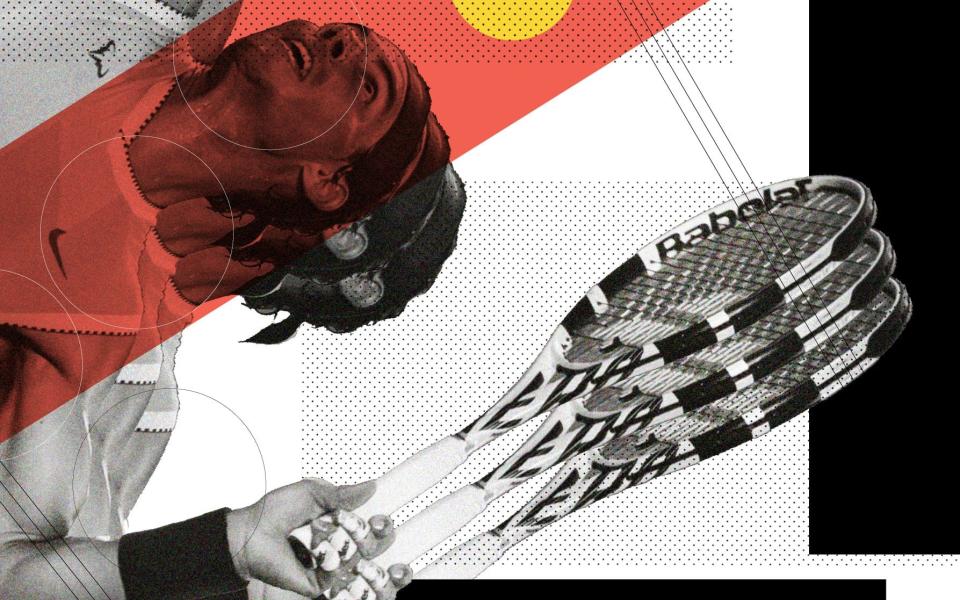How Rafael Nadal's remodelled serve has taken him to brink of Australian Open 2019 glory

The closest Rafael Nadal has been to losing his composure at this year's Australian Open came not on the court but in the press conference room. After eviscerating Tomas Berdych for the loss of just seven games in the fourth round, Nadal bristled when being asked about his remodelled serve.
"It's like every day we're creating a story about the serve, no? I talked enough about the serve," Nadal said dismissively, like a teenage boy refusing to answer his mum's question about a new girlfriend.
Nadal's evasiveness is understandable. His new serve has been one of the main talking points of the Australian Open, demonstrating a level of improvement that every player would dearly love to replicate. Understandably, Nadal has been in no mood to let his peers copy his homework.
But Nadal's false modesty - "I am happy, more or less, how the serve is working" - is fooling no-one. A cursory glance will tell you that ahead of Thursday's semi-final against Stefanos Tsitsipas, Nadal has not been broken since the first round, and in his last four matches has faced just 10 break points. Against Frances Tiafoe in Wednesday's quarter-final, he posted numbers of 74 per cent of first serves in and 84 per cent of first-serve points won. Those are Ivo Karlovic-esque numbers, and represent a major upswing from his career and 2018 figures of 69 and 66 (percentage of first serves in) and 72 and 72 (percentage of first-serve points won). Overall this tournament, Nadal is making 74 per cent of his first serves and winning 80 per cent of those points. He is also averaging 6.8 aces per match, which is comfortably more than double his career figure of 2.9 and last year's 2.7.
How then has Nadal made such a transformation when - as the eagle-eyed amongst you will have noticed - he has not grown 10 inches in the off-season?



The work with his coach Carlos Moya began pretty much as soon as Nadal had recovered from his last competitive match - at the US Open in September. As Nadal admitted on Sunday: "Good thing I had some time to work with it."
Four months away from the match court allowed team Nadal to make some important adjustments. First of all, Nadal has flattened the first serve out, going for more pace to pick up more cheap points. In the immediate aftermath of his win against Tiafoe, Nadal effectively admitted that at 32 and with his body creaking he can't play the same attritional, grinding tennis that he did in his twenties if he is to continue winning majors: "I’ve been practicing during the off season, the serve and the first shot, and during this event probably I did it more than ever, the serve and the winner with the first forehand. That’s giving me a lot of free points and that’s so important at this stage in my career."
The welcome bounty of cheap points means Nadal has spent less time on court than any of the other semi-finalists. This is almost unheard of for the normally glacial-paced Nadal.
A major reason for this is that the sped-up serve takes away opponents' ability to step in and get on the front foot when returning. As his coach Carlos Moya explained to The Telegraph, Nadal is no longer having to laboriously rescue points on his own serve: "We talk about the importance of serving well. I saw the years when Rafa was getting punished with his second serve so he was in trouble by the time he hit his first shot. That was something I wanted to change and add 10km/h on that serve. It’s one of the reasons he’s winning many points on his second serve."

Perhaps the greatest benefit of the new action is the way in which it sets up Nadal's signature shot: the whipped forehand winner. In the aftermath of the Tiafoe win, Nadal said that: "I’m so happy hitting the serve and the first forehand." Watching him this tournament, it's obvious how much the former complements the latter. At heart, Nadal - and the vast majority of the ATP Tour - plays a simple game: the so-called serve plus one forehand strategy. What that means is that every serve, if not a winner, is designed to draw a short return that allows the server to hit a penetrating forehand on their second shot.
For someone with a forehand as potent as Nadal, this is especially important, and something the new serve is setting up perfectly. According to Eurosport analyst and former British No. 1 Annabel Croft, Nadal's new service motion enables him to transition from the end of the serve to the next shot a fraction of a second quicker. This is giving Nadal more time to step into his forehand and smack winners down the line - a tactic he used to brutal effect against Tiafoe. Nadal is also forcing himself to take a step forward at the end of his service motion to ensure he starts the point on the front foot. For years, Nadal's default - especially on clay - was to take a step back after serving to give him more time to hit the next shot.
On the quicker Melbourne courts, being able to take the ball early is extremely effective - as Nadal knows to his cost after seeing Roger Federer do so to devastating effect in their final meeting two years ago. On that occasion, it was Federer's remodelled backhand that had the Melbourne Park patrons purring.
The art of reinvention has been key to Federer extending his grand-slam winning form into his mid-thirties. Nadal appears to be doing something similar.

 Yahoo Sport
Yahoo Sport 





































